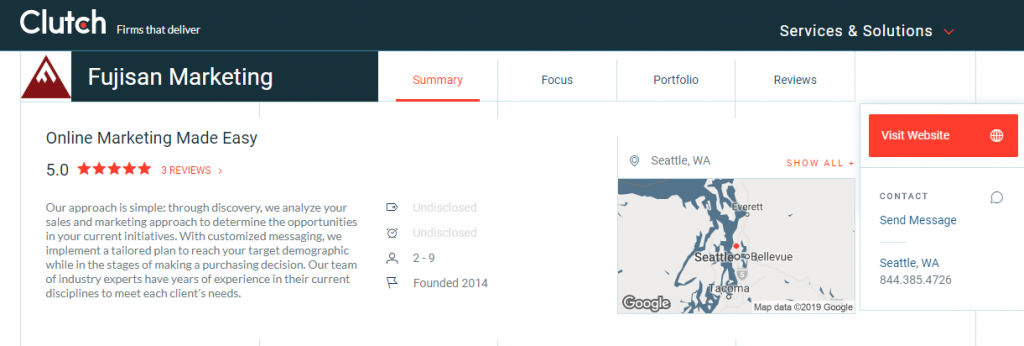So, now you know the what and why of link building (or, if you don’t, check it out in our part one article here), but what about the how? In case that last line wasn’t obvious enough, that’s what we’re going to talk about right… wait for it… now.
Types of links and what they mean
Before we dive into the tactics of link building, let’s review the different link types and how search engines treat them.
These link types are called link attributes, and they’re a way of qualifying outbound links to tell search engines more about them. Essentially, a link attribute tells Google (or Bing and other search engines) more about the linking website’s relationship with the website to which it’s linking. There are four primary link attributes included in a site’s code for a link: follow, nofollow, user-generated content (ugc), and sponsored.
Follow Links
When links are marked as “follow,” that means the link-er is allowing link equity to pass between their site to the site to which they’re linking. This is kind of like the official “vouch” for another website. In code, it appears as:
<a href=https://fujisanmarketing.com/rel=”follow”>Fujisan Marketing is the best!</a>, for example.
The rel=”follow” is the key part here.
NoFollow Links
The opposite of this is a “nofollow” link, which means the link-er would rather not associate their website with the site they’re linking to. In these cases, Google recommends adding a rel=”nofollow” link attribute. This prevents search engines from following this link to the other website, which subsequently means this doesn’t pass any link equity. While it’s obviously preferable to have a majority of follow links referring to your site, it’s natural to have a handful of nofollow links, too. In code, it would look like:
<a href=https://fujisanmarketing.com/rel=”nofollow”>Fujisan Marketing rocks my socks!</a>

Example of NoFollow Link from Clutch to Fujisan Marketing
Prior to summer 2019, Google didn’t take nofollow links into account when evaluating link profiles. However, along with adding the new link attributes we’re about to cover, this summer Google changed how it handles nofollow links. Now, instead of just ignoring these links when evaluating, Google treats them more like mini-hints — but they’re still not full endorsements, like a follow link
User-Generated Content
Now, while follow and nofollow are the primary link attributes, Google recently added two new ones. The first of these is “user-generated content.” User-generated content is a new link attribute which tells Google that the linked content was written by someone associated with the link-er. In code, it appears as:
<a href=https://fujisanmarketing.com/rel=”ugc”>Fujisan Marketing is the bee’s knees!</a>
This link attribute is primarily relevant in forums, blog comments, and other places where users beyond the site administrator can upload content.
Sponsored Links
The last link attribute is “sponsored,” which is exactly what it sounds like. Like user-generated content, it’s a new addition to the team and tells Google when a link is advertising or paid content. In code, it looks like:
<a href=https://fujisanmarketing.com/rel=”sponsored”>Fujisan Marketing is our favorite!</a>
These are used in cases where your site paid for a sponsored article; instead of linking to your site with a nofollow attribute that wouldn’t pass link equity, a sponsored link attribute would still have value for determining your site’s relationship with the site linking to you.
Tactics for link building
With the knowledge of how these links work, it then makes it easier to understand where their value lies and how to utilize it. The following are some useful tactics to boost your backlink profile:
Create (good) content
The most significant of these tactics is to create relevant, consistent content on your site. Content that provides value to others is content that others are more likely to share. And, through extension, the means of that sharing is primarily through links.
This is Google’s most highly recommended tactic to build links. The thought process is simple: if you produce content that’s quality and worthwhile, then naturally other websites will want to link to it. This strategy is also gratifying for another reason: there is, really, no way to “hack” creating good content — moreover, by diligently creating this content, the primary goal is earning the trust, value, and subsequent links of other sites. In this way, creating content for the sake of creating content isn’t a very effective strategy; ask yourself if what you’re putting on your site would be of value to others. If the answer is “no,” then it’s wasted words. On the other hand, content that provides value for others will come back to provide value to you.
If you’re stuck and want some ideas for a starting point, valuable content could include tools others could use, infographics relevant to your field, interesting surveys for others to fill out, or case studies for how your service helps its clients.

Example of Outbound link
Leverage unlinked mentions (online diplomacy, if you will)
Besides creating content, another tactic for increasing links to your site includes leveraging unlinked mentions of others towards you.
In theory, this is one of the quickest ways to boost your link profile, because the hard part of getting someone to speak positively about you online is already done. Doing this is simple — your job is to find instances online of your brand being mentioned without also being linked in those cases. Ideally, reaching out to those sites that mention you and requesting they include a link to your site should be pretty easy. After all, they already like you, so as long as they aren’t sadistic ding dongs they should be more than happy to help you out.
Build up your offline relationships
This is kind of related to the former, because it too is just about building up good relationships with other relevant businesses and brands. Plus, even disregarding the world of links and online presence, it’s always a good idea to value networking and building symbiotic relationships. Close offline relationships often translate well to the online world and vice versa.
If you need ideas to start off with, some examples could include sponsoring an industry networking event, being a guest on related podcasts, or volunteering for local or industry-connected causes. You know, good ol’ fashioned making friends, offline-style.
Write about other people, services, or companies
This is what the SEO industry calls “ego bait.” (Does that sound disdainful? Suppose so, but, well, we didn’t invent the term.)
The goal with this is that by featuring other companies in your content, they’ll be more inclined to shout you out, too. Typically, these are in the form of profiles, non-hacky listicles (for example, “Check out These SaaS Companies”), and similar content. However, if you pursue this tactic, be sure to do your research. Similar to creating content in general, make sure your topic is one people would find value in reading — include insightful details about your subject, plus be sure to reach out afterwards to let those featured know they’re in your article. In that way, this tactic is kind of a combination of all of the above.
Repair lost links
One last tactic is just a matter of checking up on some online details. Sometimes, links you’ve built go away. This usually happens when a destination website changes its page URLS or the source website (or their page that linked to you) ceases operations. You can identify lost links through link analysis tools like Moz Pro or SEMRush. In cases where one of these tools finds a lost link, we recommend reaching out to the owner of the source website to have them update your backlink to the correct page of yours.
Overall, link profiles can take time to build, especially when you’re first starting out. Building these up is designed to take a while, and Google will notice (and punish you) if you take any shortcuts, so patience is the key. And remember: unless you want to be linked to by sketchy Latvian adult sites, never buy links.
Feeling more confident now about starting your link building strategy? Give us a call at (844) 385-4726 or drop us a line on our contact page to get started.
You can find part 1 of this article here.




